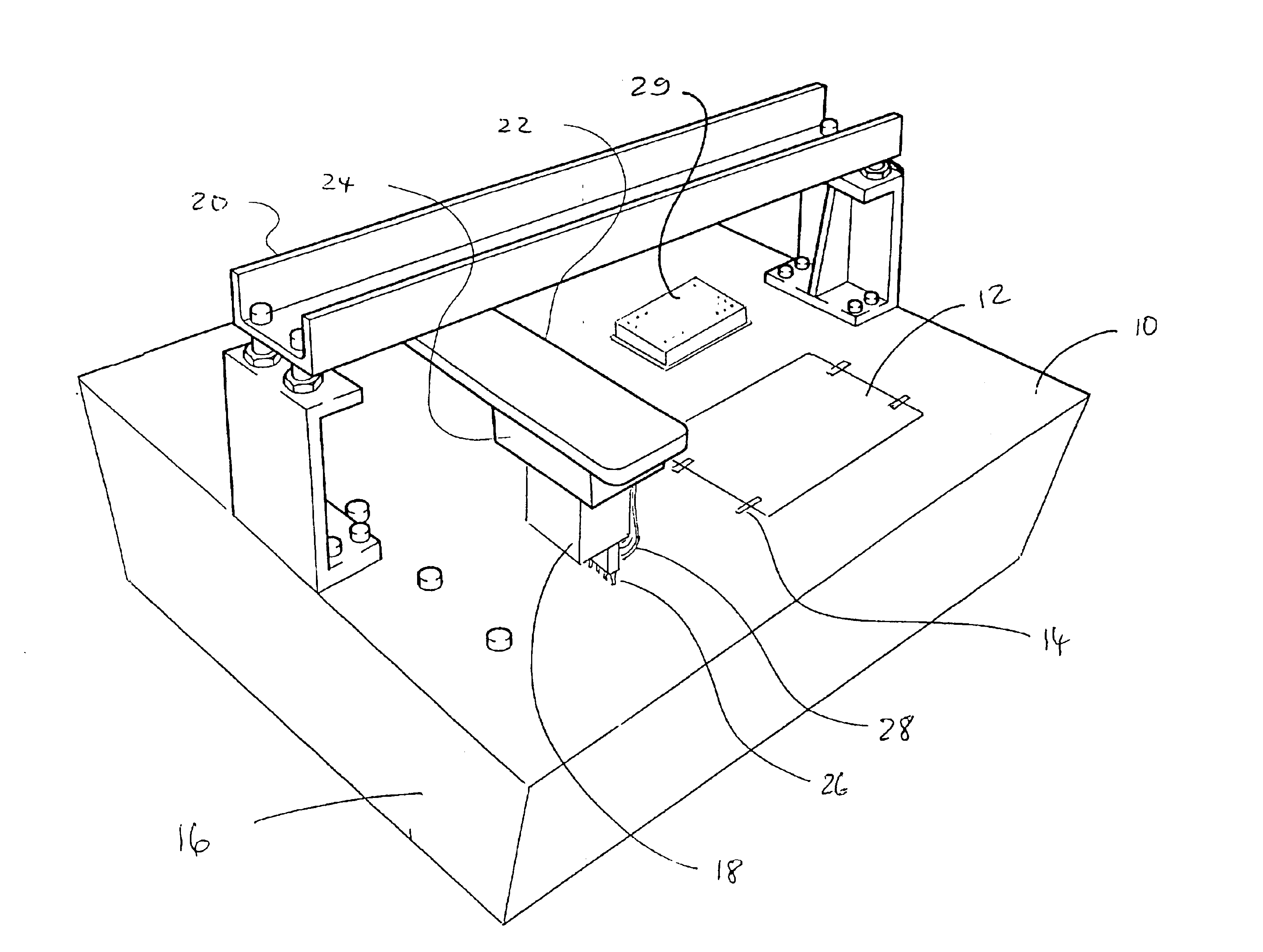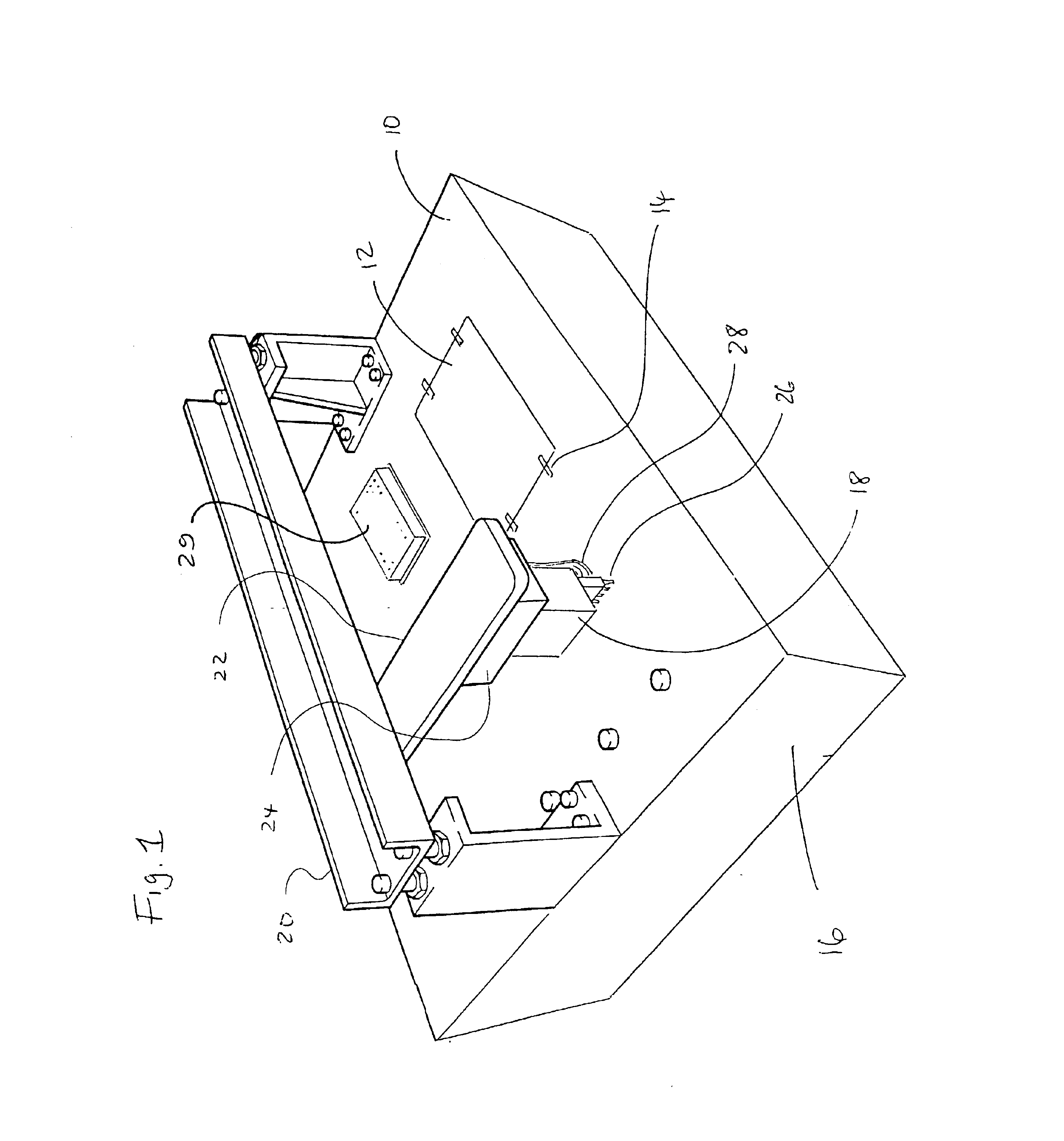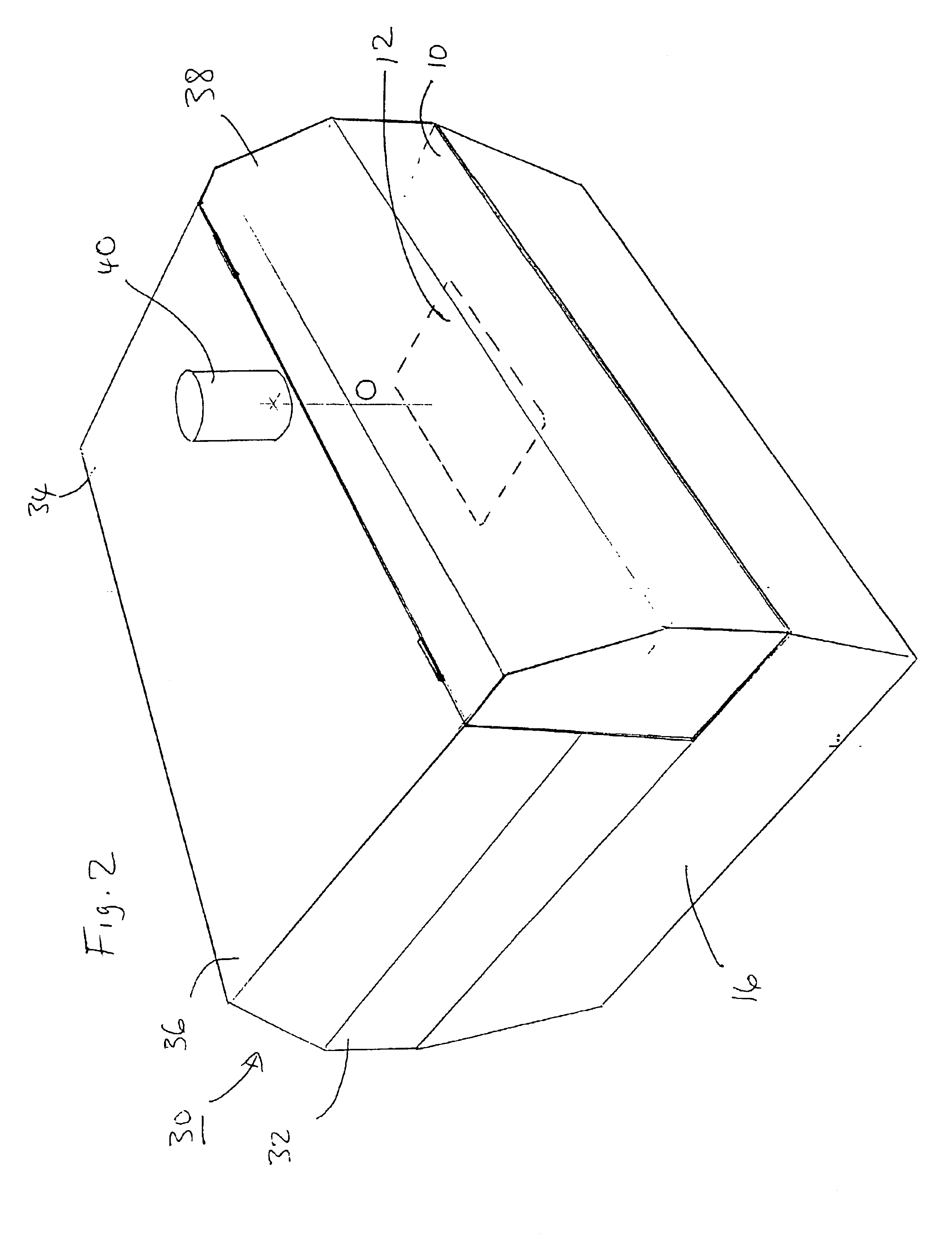Gel imaging and excision
- Summary
- Abstract
- Description
- Claims
- Application Information
AI Technical Summary
Benefits of technology
Problems solved by technology
Method used
Image
Examples
Embodiment Construction
FIG. 1 is a perspective view of the lower part of an apparatus embodying the invention. The upper part is not shown in order to reveal the main bed 10 of the apparatus. A light table plate 12 made of a translucent material, known as opal acrylic, is mounted flush with the main bed. A set of clamps 14 (four in the figure) is provided around the periphery of the light table plate 12 for locating and securing gel dishes, such as Q-trays, on the light table. The light table plate is illuminated from below by optical equipment accommodated under the main bed in the space provided in the apparatus's main base 16.
The apparatus has a manipulation head 18, a gel coring head in the figure, which is movable over the main bed of the apparatus by x- y- and z-positioners 20, 22 and 24 respectively. The gel coring head illustrated comprises an array of gel corers 26, each gel corer having the form of a hollow pin connected to an air feed line. In one example, the head has a 1×8 array of corers wit...
PUM
 Login to View More
Login to View More Abstract
Description
Claims
Application Information
 Login to View More
Login to View More - R&D
- Intellectual Property
- Life Sciences
- Materials
- Tech Scout
- Unparalleled Data Quality
- Higher Quality Content
- 60% Fewer Hallucinations
Browse by: Latest US Patents, China's latest patents, Technical Efficacy Thesaurus, Application Domain, Technology Topic, Popular Technical Reports.
© 2025 PatSnap. All rights reserved.Legal|Privacy policy|Modern Slavery Act Transparency Statement|Sitemap|About US| Contact US: help@patsnap.com



